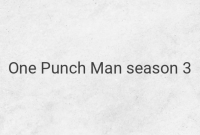In the anime and manga series Naruto, there are several powerful shinobi who possess incredible jutsu but are afflicted with deadly illnesses. This adds complexity and depth to the story, exploring themes of vulnerability and sacrifice. Let’s take a closer look at some of the strongest shinobi with deadly diseases.
One of the most notable shinobi with a deadly illness is Itachi Uchiha. Itachi suffers from an unknown disease, which is revealed when he frequently coughs up blood. This adds an element of suspense and urgency to his character, as he continues to fight while battling his deteriorating health.
Another shinobi affected by a severe illness is Hayate Gekko. Hayate has a severe coughing condition, which eventually leads to his demise after learning of an invasion plan. His illness serves as a catalyst for character development and highlights the fragility of life in the Naruto universe.
Kimimaro, a member of the Kaguya clan, also suffers from a mysterious disease. Like Itachi, he coughs up blood, further underscoring the notion that even the strongest shinobi are not immune to deadly ailments. Kimimaro’s illness plays a significant role in the plot and showcases the sacrifices made by characters in the pursuit of their goals.
Shin, the older brother of Sai, meets his end due to a dangerous illness. He loses a duel to Sai, further emphasizing the impact of his disease on his strength and ability to fight. Shin’s death adds an emotional element to the story and reminds us of the transient nature of life.
Nagato Uzumaki, although not afflicted with a deadly disease, appears weak and thin due to his use of the Gedo Mazo. This highlights the toll that powerful jutsu can take on the physical body and serves as a reminder that even seemingly invincible shinobi have their limits.
The protagonist of the series, Naruto Uzumaki, experiences a mysterious chakra-related illness. This illness resembles Hagoromo’s, the Sage of Six Paths, and prompts Naruto to embark on a mission to find a cure. Along the way, he receives assistance from his friends Sasuke and Sakura, further emphasizing the theme of sacrifice and the importance of relationships in overcoming adversity.
The search for a cure leads Naruto to discover the polar particle cure, previously used by Hagoromo himself. This ancient remedy adds a layer of mythology to the story and showcases the interconnectedness of past and present events. Naruto’s quest for a cure highlights the lengths he is willing to go to protect those he cares about.
Overall, the presence of deadly diseases among the strongest shinobi in Naruto adds complexity to the story. It explores themes of vulnerability, sacrifice, and the fragility of life. These illnesses contribute to the plot and character development, reminding us that even the most powerful individuals are not immune to the challenges of mortality.
As the series progresses, it becomes clear that strength goes beyond physical abilities. It encompasses resilience, determination, and the willingness to face adversity head-on. The deadly diseases faced by the shinobi in Naruto serve as a testament to their unwavering spirit and the bonds they form with one another.
In conclusion, the Naruto series showcases several of the strongest shinobi who are afflicted with deadly diseases. These illnesses add depth and complexity to the story, exploring themes of vulnerability and sacrifice. As we witness the struggles and triumphs of these characters, we are reminded that even the most powerful individuals are not invincible.




